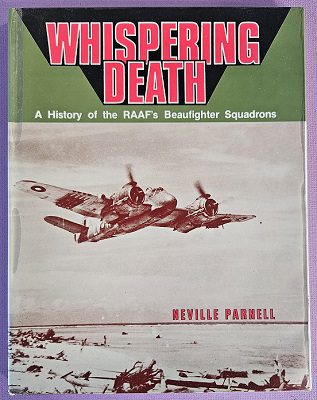Description
Title: 451 Squadron R.A.A.F. – Middle East Forces 1941 – 1946 Anecdotes
Author:
Condition: Very Good
Edition: 1st Edition
Publication Date: 2002
ISBN: 0646290908
Cover: Soft Cover without Dust Jacket – 236 pages
Comments: The stories of members of No. 451 Squadron RAAF during World War 2.
No. 451 Squadron, Royal Australian Air Force was raised at Bankstown, on the outskirts of Sydney, on 12 February 1941. Formed under Article XV of the Empire Air Training Scheme, the squadron was destined for service with Britain’s Royal Air Force (RAF) overseas. It sailed from Sydney on 9 April 1941 and became operational in Egypt on 1 July. Equipped with Hawker Hurricane fighters and Westland Lysander utility aircraft, the squadron was employed in an army co-operation role. It carried out reconnaissance missions, directed artillery fire and engaged enemy troops, vehicles and emplacements on the ground.
The squadron supported British Commonwealth operations in the Western Desert from July 1941 until January 1942. It operated a two-aircraft detachment from within the besieged fortress of Tobruk between 13 September and 8 December 1941. In the meantime, the rest of the squadron was attached to the British Army’s 13 Corps and was at the forefront of operations during the “Crusader” offensive in November and December 1941. On several occasions the advanced position of the squadron’s landing grounds, combined with the fluid nature of the “Crusader” battles, resulted in the capture of its personnel by German ground troops. In what one pilot described as a “decidedly punch-drunk” state, the squadron was withdrawn from operations to rest and refit on 24 January 1942.
In February 1942, 451 Squadron relocated to Syria to join the British 9th Army as part of the Syria garrison. This move heralded a demoralising period for the squadron. The RAF’s Middle East Command had more army co-operation squadrons than it could effectively employ, and the Australian Air Board refused to allow 451 Squadron to be converted to a fighter squadron. Thus, it remained virtually inactive in Syria, and in Cyprus where it maintained a detached flight, and morale plummeted. In January 1943 the squadron moved to Egypt as part of the Nile Delta defences and finally began to retrain as a fighter squadron. Any real threat to the delta had long since passed, however, and the squadron’s lethargic existence continued.
In early 1944, 451 Squadron was re-equipped with Spitfire fighters and on 19 February it arrived on Corsica. The island would be its base for its next assignment: the support of Allied operations in southern Europe, including the campaign in Italy and the Allied invasions of Elba and southern France. In the wake of the easy progress of the land campaign, 451 Squadron relocated to southern France on 27 August. The rapid ground advance, however, quickly left the squadron out of effective range of the frontline and it began redeploying to Italy on 16 October. Italy would only be a lay-by for the squadron on journey that would ultimately end in Britain on December 1944.
The last months of the war in Europe were 451 Squadron’s most active since 1941. Operating from several airfields in Britain, it escorted heavy bombers, conducted fighter sweeps, and attacked targets on the ground, including V2 rocket launch sites, across the steadily diminishing German-controlled territory in western Europe. After the cessation of hostilities, 451 Squadron moved into Germany on 27 September 1945 as part of the British occupation forces. It was planned that the squadron would form a long-term Australian presence among the occupation forces but sufficient volunteers could not be found to make this a viable proposition. Thus, on 21 January 1946 the squadron disbanded.
Includes Nominal Roll



